
Jules Gabriel Verne was a French novelist, poet, and playwright. His collaboration with the publisher Pierre-Jules Hetzel led to the creation of the Voyages extraordinaires, a series of bestselling adventure novels including Journey to the Center of the Earth (1864), Twenty Thousand Leagues Under the Seas (1870), and Around the World in Eighty Days (1872). His novels, always well-researched according to the scientific knowledge then available, are generally set in the second half of the 19th century, taking into account the technological advances of the time.

Twenty Thousand Leagues Under the Seas is a science fiction adventure novel by the French writer Jules Verne. It is often considered a classic within both its genres and world literature. The novel was originally serialised from March 1869 to June 1870 in Pierre-Jules Hetzel's French fortnightly periodical, the Magasin d'éducation et de récréation. A deluxe octavo edition, published by Hetzel in November 1871, included 111 illustrations by Alphonse de Neuville and Édouard Riou.

Around the World in Eighty Days is an adventure novel by the French writer Jules Verne, first published in French in 1872. In the story, Phileas Fogg of London and his newly employed French valet Passepartout attempt to circumnavigate the world in 80 days on a wager of £20,000 set by his friends at the Reform Club. It is one of Verne's most acclaimed works.
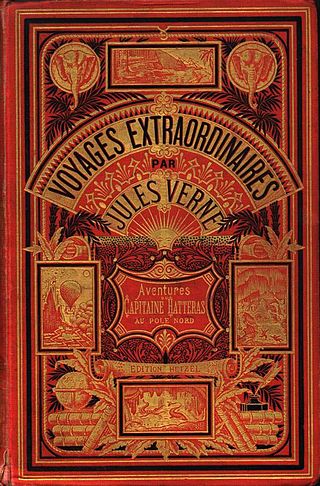
The Voyages extraordinaires is a collection or sequence of novels and short stories by the French writer Jules Verne.
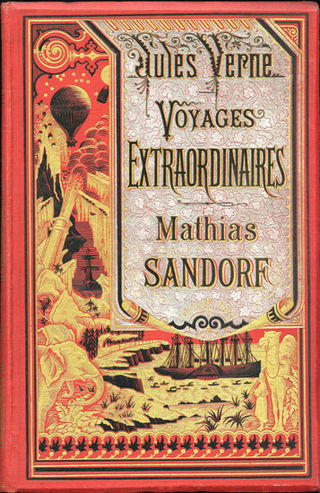
Mathias Sandorf is an 1885 adventure book by the French writer Jules Verne first serialized in Le Temps in 1885. It employs many of the devices that had served well in his earlier novels: islands, cryptograms, surprise revelations of identity, technically advanced hardware and a solitary figure bent on revenge. Verne planned Mathias Sandorf as the Mediterranean adventure of his series of novels called Voyages extraordinaires. He dedicated the novel to the memory of Alexandre Dumas.

"A Drama in Mexico" is a historical short story by Jules Verne, first published in July 1851 under the title "L'Amérique du Nord, études historiques: Les Premiers Navires de la marine mexicaine."
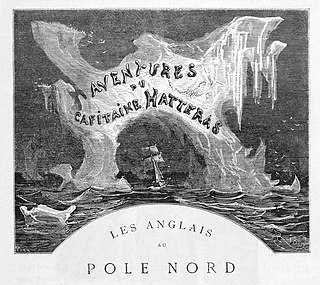
The Adventures of Captain Hatteras is an 1864 adventure novel by Jules Verne in two parts: The English at the North Pole and The Desert of Ice.

Family Without a Name is an 1889 adventure novel by Jules Verne about the life of a family in Lower Canada during the Lower Canada Rebellion of 1837 and 1838 that sought an independent and democratic republic for Lower Canada. In the book, the two sons of a traitor fight in the Rebellion in an attempt to make up for the crime of their father.

The Fur Country or Seventy Degrees North Latitude is an adventure novel by Jules Verne in The Extraordinary Voyages series, first published in 1873. The novel was serialized in Magasin d’Éducation et de Récréation from 20 September 1872 to 15 December 1873. The two-volume first original French edition and the first illustrated large-format edition were published in 1873 by Pierre-Jules Hetzel. The first English translation by N. D’Anvers was also published in 1873.

The Village in the Treetops is a 1901 novel by French author Jules Verne. The book, one of Verne's Voyages extraordinaires, is his take on Darwinism and human development.

The Sea Serpent: The Yarns of Jean Marie Cabidoulin is an adventure novel by French author Jules Verne first published in 1901. The story centers on a French whaling ship, the St. Enoch, which sets out from Le Havre on a voyage to kill whales for their meat and oil. The ship's cooper is the eponymous Cabidoulin, a firm believer in the existence of a giant serpent with a habit of dragging vessels to their doom.
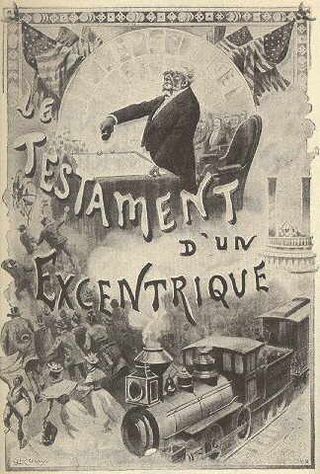
The Will of an Eccentric is a 1900 adventure novel written by Jules Verne based on the Game of the Goose.
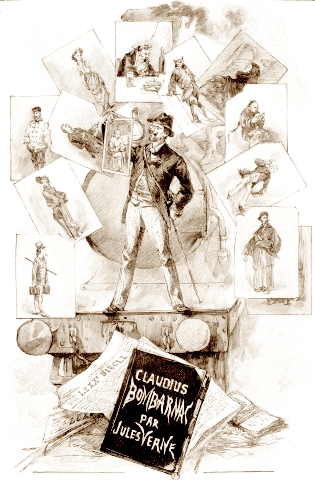
Claudius Bombarnac is an adventure novel written by Jules Verne.

"A Drama in the Air" is an adventure short story by Jules Verne. The story was first published in August 1851 under the title "Science for families. A Voyage in a Balloon" in Musée des familles with five illustrations by Alexandre de Bar. In 1874, with six illustrations by Émile-Antoine Bayard, it was included in Doctor Ox, the only collection of Jules Verne's short stories published during Verne's lifetime. An English translation by Anne T. Wilbur, published in May 1852 in Sartain's Union Magazine of Literature, marked the first time a work by Jules Verne was translated into the English language.
Chemin or Le Chemin may refer to:
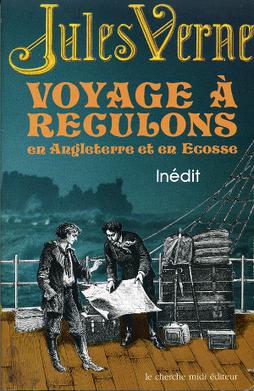
Backwards to Britain is a semi-autobiographical novel by the French writer Jules Verne, written in the fall and winter of 1859–1860 and not published until 1989.

Journey Through the Impossible is an 1882 fantasy play written by Jules Verne, with the collaboration of Adolphe d'Ennery. A stage spectacular in the féerie tradition, the play follows the adventures of a young man who, with the help of a magic potion and a varied assortment of friends and advisers, makes impossible voyages to the center of the Earth, the bottom of the sea, and a distant planet. The play is deeply influenced by Verne's own Voyages Extraordinaires series and includes characters and themes from some of his most famous novels, including Twenty Thousand Leagues Under the Seas, Journey to the Center of the Earth, and From the Earth to the Moon.

Jules Verne (1828–1905) was a French novelist, poet, and playwright. Most famous for his novel sequence, the Voyages Extraordinaires, Verne also wrote assorted short stories, plays, miscellaneous novels, essays, and poetry. His works are notable for their profound influence on science fiction and on surrealism, their innovative use of modernist literary techniques such as self-reflexivity, and their complex combination of positivist and romantic ideologies.

The Jules Verne was an express train that linked Paris and Nantes in France. Operated by the Société Nationale des Chemins de fer français (SNCF), it was the last new Trans Europ Express (TEE) to be introduced, in 1980.

Jules Verne (1828–1905), the French writer best known for his Voyages extraordinaires series, has had a wide influence in both scientific and literary fields.



















